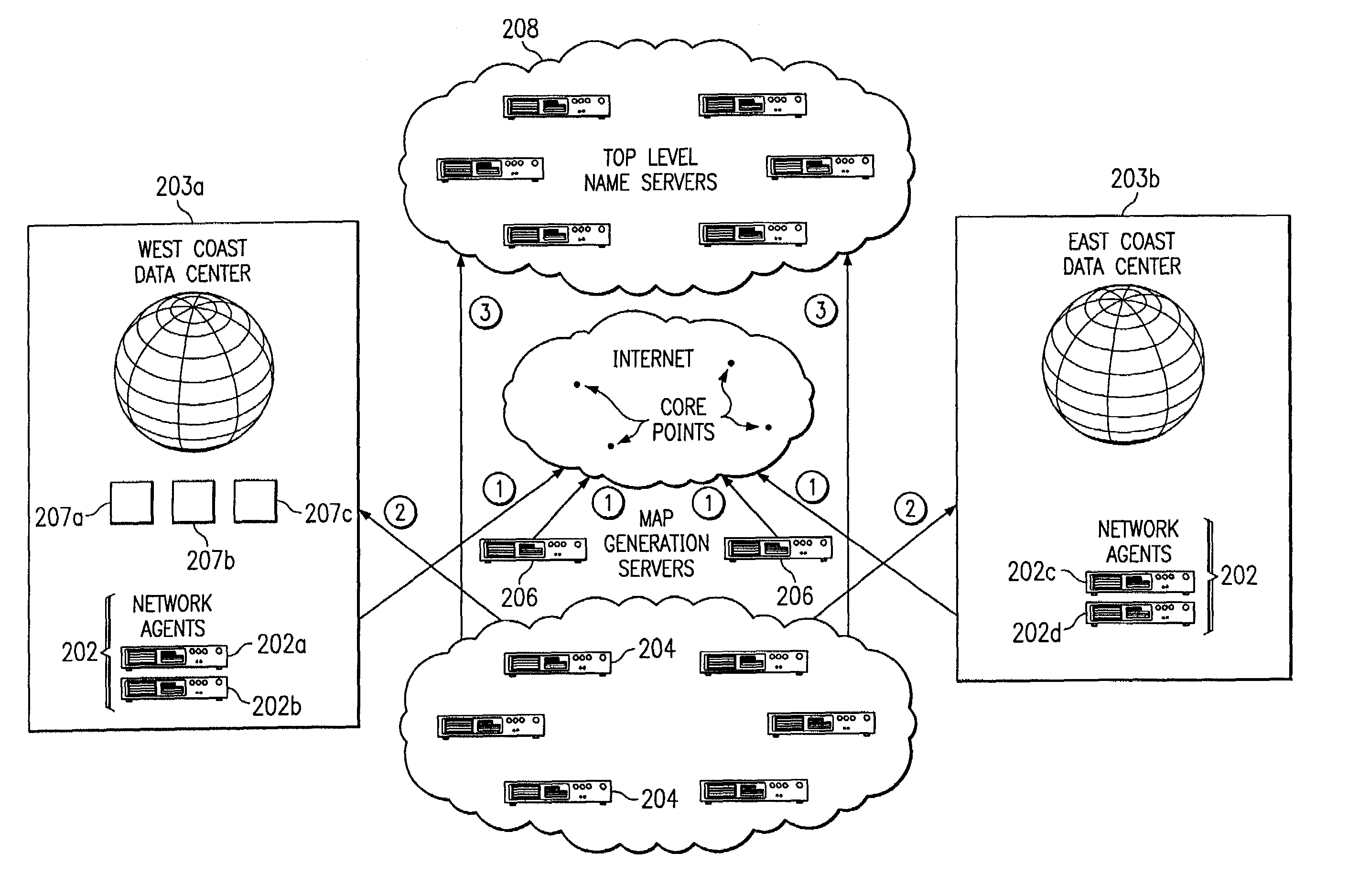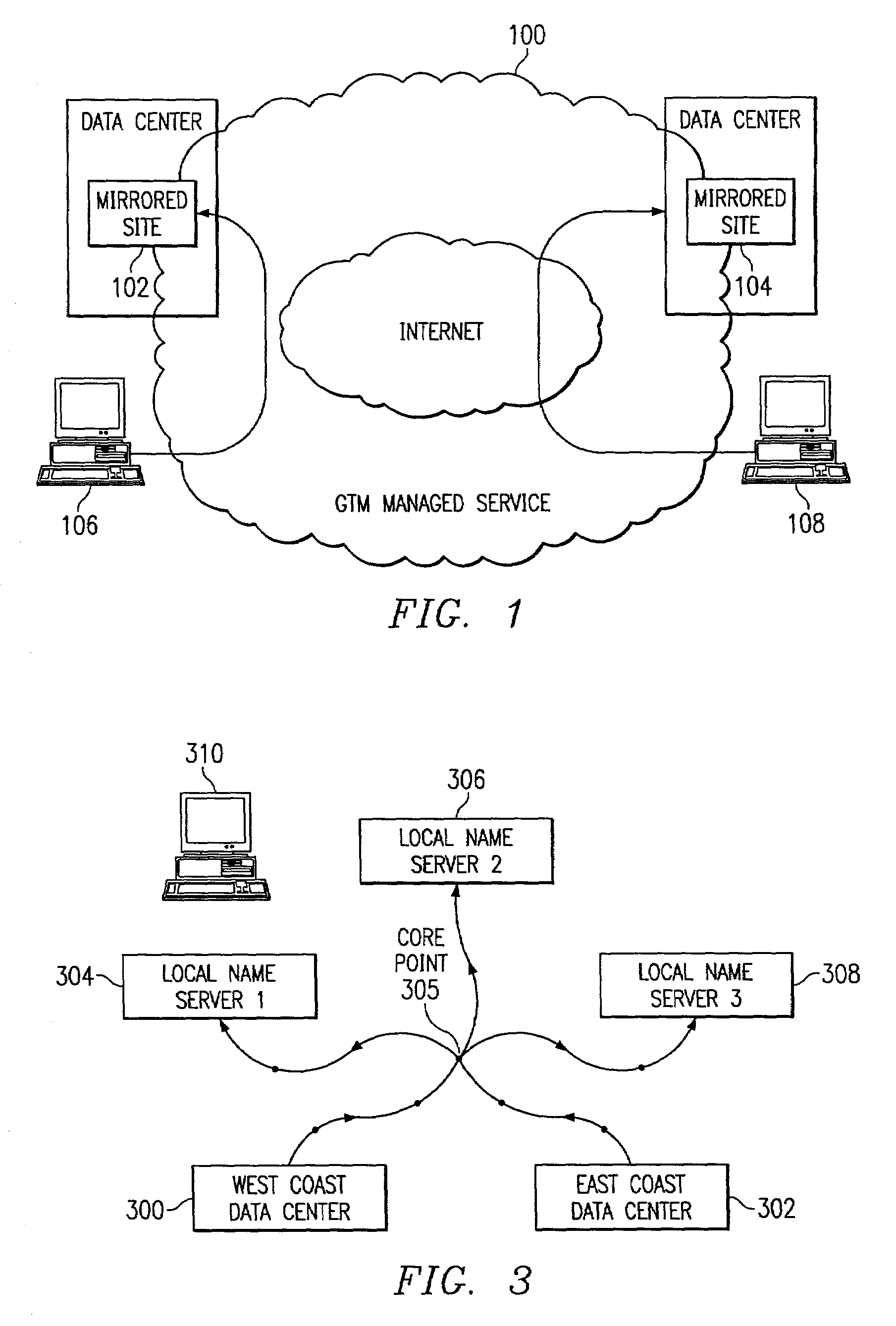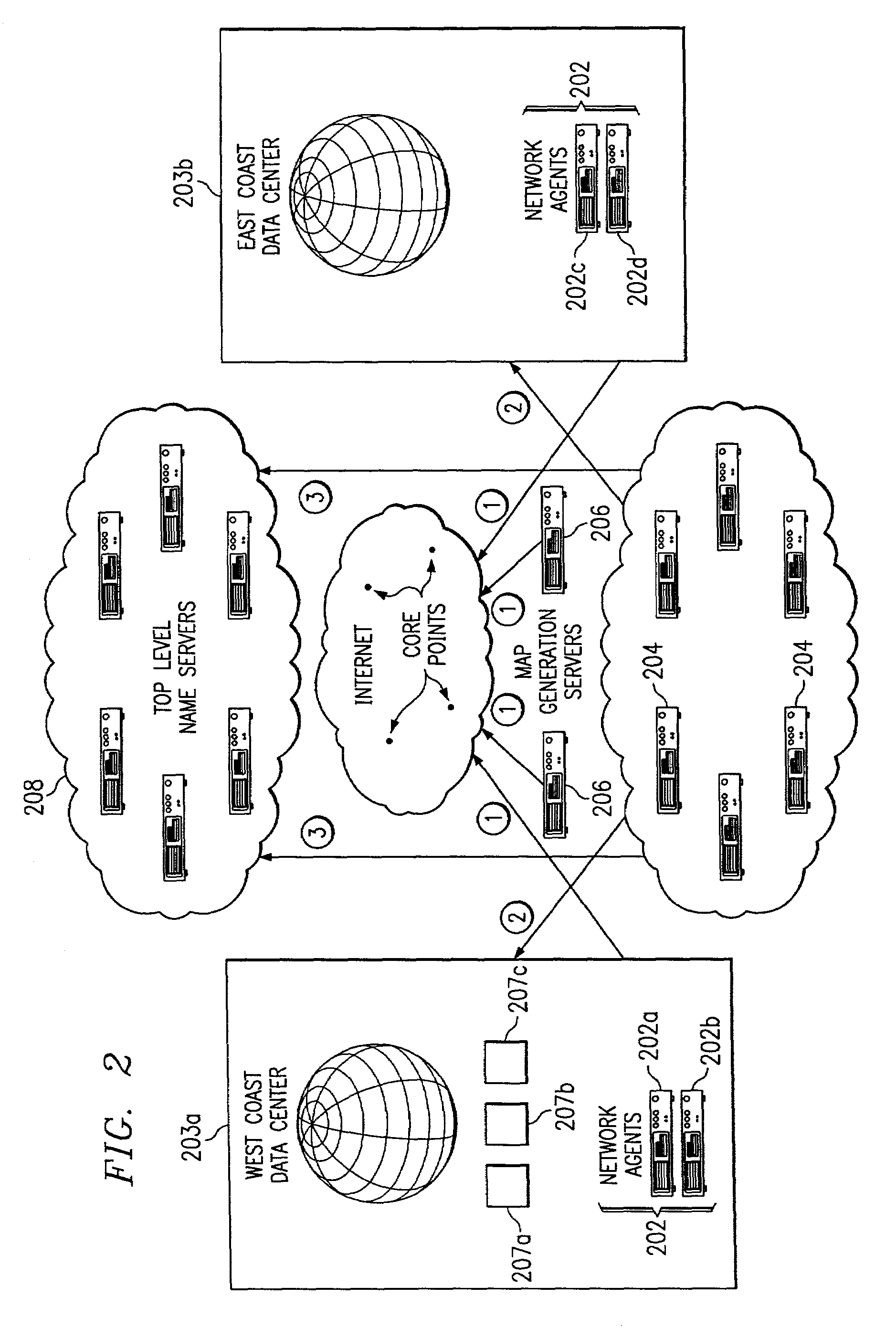Global load balancing across mirrored data centers
a data center and load balancing technology, applied in the field of high-performance, fault-tolerant content delivery, can solve the problems of poor turnaround time, noisy measurement to the endpoint, and potentially stale mapping of successive requests, so as to reduce the size of the network map
- Summary
- Abstract
- Description
- Claims
- Application Information
AI Technical Summary
Benefits of technology
Problems solved by technology
Method used
Image
Examples
Embodiment Construction
[0024]By way of brief background, it is known in the art for a Web content provider to distribute or “mirror” its Web site to ensure that the site is always available and providing acceptable performance for a global customer base. Once a Web site is distributed, global traffic management (GTM) solutions typically are used to direct users to the various mirror sites. GTM solutions use a variety of methods to determine which is the “best” mirrored site in which to direct a user. Because Internet conditions are constantly changing, however, the “best” site for a particular user also varies with these conditions. The present invention is a GTM solution that maximizes availability and performance of a mirrored delivery site.
[0025]In a preferred embodiment now described, the global traffic management solution is a managed service provided by a service provider, such as a content delivery network (CDN) service provider (CDNSP). As is well-known, a CDN is a network of geographically distri...
PUM
 Login to View More
Login to View More Abstract
Description
Claims
Application Information
 Login to View More
Login to View More - R&D
- Intellectual Property
- Life Sciences
- Materials
- Tech Scout
- Unparalleled Data Quality
- Higher Quality Content
- 60% Fewer Hallucinations
Browse by: Latest US Patents, China's latest patents, Technical Efficacy Thesaurus, Application Domain, Technology Topic, Popular Technical Reports.
© 2025 PatSnap. All rights reserved.Legal|Privacy policy|Modern Slavery Act Transparency Statement|Sitemap|About US| Contact US: help@patsnap.com



